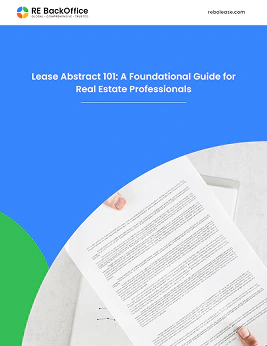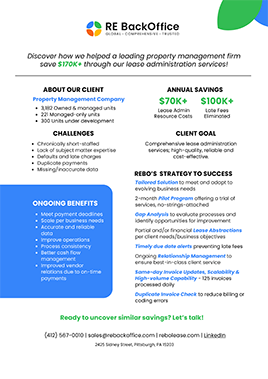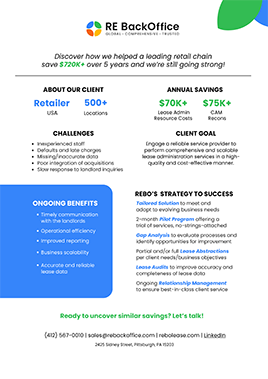
Managing leases efficiently is critical for businesses with real estate portfolios. Lease administration software simplifies this process by automating lease tracking, compliance, financial reporting, and document management. However, with numerous options available, selecting the right software can be challenging.
The right lease administration software should align with your business needs, ensuring accuracy, compliance, cost control, and operational efficiency. This guide explores key features, evaluation criteria, and best practices to help you choose the most suitable lease administration software for your organization.
Why Lease Administration Software is Essential
Manual lease management using spreadsheets or outdated systems increases the risk of errors, missed deadlines, and compliance violations. Lease administration software offers:
- Automated lease tracking to ensure timely renewals and compliance
- Financial management tools for accurate rent payments, CAM reconciliations, and expense forecasting
- Centralized document storage for easy access and security
- Custom reporting and analytics to support data-driven decisions
- Regulatory compliance support for ASC 842, IFRS 16, and GASB 87
- Adopting lease administration software streamlines operations, reduces risks, and enhances transparency across lease portfolios.
Key Features to Look for in Lease Administration Software
When evaluating lease administration software, ensure it includes essential features that improve efficiency and compliance.
1. Centralized Lease Management
- Stores all lease agreements, amendments, and supporting documents in one platform
- Provides easy access to lease data for all stakeholders
- Ensures document security and compliance
2. Automated Lease Tracking & Alerts
- Tracks key lease dates, renewals, expirations, and rent escalations
- Sends automated notifications to avoid missed deadlines
- Helps manage lease obligations efficiently
3. Compliance with Lease Accounting Standards
- Supports ASC 842, IFRS 16, and GASB 87 compliance
- Automates lease classification and financial reporting
- Reduces audit risks and ensures accurate financial statements
4. Financial & Rent Management
- Tracks rent payments, invoices, and CAM reconciliations
- Automates payment calculations based on lease terms
- Generates financial reports for budget forecasting
5. Customizable Reporting & Analytics
- Provides insights into lease portfolio performance
- Generates reports on lease expenses, obligations, and cost-saving opportunities
- Allows customizable dashboards for data visualization
6. Integration with ERP & Accounting Systems
- Syncs with accounting software like QuickBooks, SAP, and Oracle
- Ensures seamless financial reconciliation and reporting
- Reduces manual data entry and errors
7. User Access & Role-Based Permissions
- Provides secure user access control
- Allows different departments (finance, legal, operations) to access relevant data
- Protects sensitive lease information
8. Cloud-Based Accessibility & Mobile Support
- Enables remote access to lease data from any location
- Provides mobile-friendly features for on-the-go management
- Enhances collaboration among teams
9. Audit Trail & Historical Tracking
- Maintains a record of changes and updates to lease agreements
- Ensures accountability and transparency in lease management
- Helps during internal audits and legal reviews
Selecting lease administration software with these features ensures a streamlined, error-free, and scalable lease management process.
How to Choose the Right Lease Administration Software
With multiple software options available, follow these steps to find the best fit for your organization:
1. Assess Your Business Needs & Lease Portfolio Size
- Determine the number of leases and their complexity
- Identify pain points in your current lease management process
- Consider regulatory compliance requirements
2. Define Your Budget & ROI Expectations
- Compare subscription-based vs. one-time purchase pricing models
- Evaluate cost savings from automation and compliance improvements
- Consider scalability as your portfolio grows
3. Compare Software Usability & Interface
- Choose a system with an intuitive, user-friendly interface
- Ensure it requires minimal training for your team
- Opt for software that simplifies rather than complicates lease management
4. Check Software Integration Capabilities
- Ensure compatibility with your existing ERP, CRM, and accounting systems
- Look for APIs that enable smooth data sharing between platforms
- Verify integration with financial reporting and compliance tools
5. Evaluate Security & Data Protection Measures
- Choose a platform with encrypted data storage and multi-factor authentication
- Ensure the software complies with industry security standards
- Verify backup and disaster recovery protocols
6. Request a Demo & Trial Period
- Test the software with real lease data before committing
- Assess its ease of use, functionality, and reporting capabilities
- Gather feedback from key stakeholders in finance, operations, and legal teams
7. Analyze Customer Support & Training Options
- Check for availability of 24/7 customer support
- Ensure access to training materials, tutorials, and onboarding assistance
- Choose a vendor that provides ongoing software updates and improvements
8. Read Reviews & Case Studies
- Look at customer testimonials and software reviews
- Request case studies of businesses similar to yours
- Verify the vendor's reputation and market presence
Selecting lease administration software that aligns with your business goals, compliance needs, and operational workflows ensures long-term efficiency and cost savings.
Common Mistakes to Avoid When Choosing Lease Administration Software
Choosing Software Without Considering Scalability
A system that works for 50 leases may not support 500+ leases in the future.
Ignoring Compliance & Accounting Standards
Non-compliant software can lead to financial misstatements and audit issues.
Overlooking User Experience & Training Needs
Complicated interfaces reduce adoption rates and require costly training.
Not Verifying Integration Capabilities
Lack of integration with accounting tools leads to duplicate data entry.
Focusing Only on Cost Instead of Features & ROI
Cheap software with limited features can result in inefficiencies and compliance risks.
Avoiding these mistakes ensures you invest in a robust, future-proof lease administration solution.
Top Benefits of Implementing Lease Administration Software
- Reduced Administrative Burden – Automates lease tracking, reporting, and compliance management
- Improved Accuracy & Compliance – Ensures alignment with lease accounting standards
- Enhanced Financial Visibility – Provides real-time insights into lease obligations and expenses
- Stronger Lease Negotiation Power – Access to lease data helps optimize terms and cost savings
- Increased Efficiency & Productivity – Eliminates manual processes and reduces errors
Investing in the right lease administration software helps businesses save time, reduce costs, and improve lease portfolio management.
Selecting the right lease administration software is a strategic decision that impacts financial accuracy, compliance, and operational efficiency. By prioritizing automation, compliance, security, integration, and user-friendliness, businesses can streamline lease management while reducing risks.
To make the best choice, businesses should evaluate their needs, test software functionality, ensure scalability, and seek a vendor with strong customer support. Investing in the right software enhances lease visibility, improves financial reporting, and supports business growth.
Would you like expert guidance in choosing the ideal lease administration software? Explore your options today and optimize your lease management process for long-term success!


